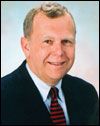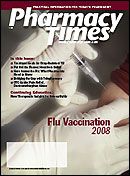Publication
Article
Pharmacy Times
Drug Diversion and Abuse: CME Collaboration Unites Health Professionals, Law Enforcement
Author(s):
A recent CME program bringing together health professionals and law enforcement showed the benefit for these professionals of working together in reducing drug diversion.
John Burke, commander of the Warren County, Ohio, drug task force and retired commander of the Cincinnati Police Pharmaceutical Diversion Squad, is a 40-year veteran of law enforcement. Cmdr Burke also is the current president of the National Association of Drug Diversion Investigators. For information, he can be reached by e-mail at linkEmail('burke','choice.net');, via the Web site www.rxdiversion.com, or by phone at 513-336-0070.

Recently, I had the pleasureof seeing something come tofruition that had been plannedfor some time. As president of theNational Association of Drug DiversionInvestigators (NADDI), I was able toparticipate in a continuing medical education(CME) event that involved lawenforcement, regulatory agents, and ahost of health professionals, includingpharmacists, physicians, nurses, andphysician assistants. All of these individualscame together with law enforcementto learn more about prescriptiondrug abuse and proper pain managementpractices.
Diverse Perspectives, Shared Goals
The program was set in Florence,Kentucky, with the CME credits procuredby The Hospice of the Bluegrass,with assistance from John Peppin, DO,NADDI's new medical liaison officerand a pain management physician.Significant assistance was providedby several pharmaceutical companies,other industry-related entities, and theprescription-monitoring programs fromboth Kentucky (KASPER) and Ohio(OARRS). Attendees came from Ohio,Kentucky, Indiana, and Tennessee.
This CME program stands out in mymind, because hopefully it is a start toa closer collaboration between healthprofessionals and law enforcement.The hope is that we recognize that weare all on the same side, with the ultimategoal of providing uninterruptedmedication to those who are in need,which are the vast majority of thoseprescribed controlled substances.
Overcoming Fears
Over the past few years, some healthprofessionals have developed a fearthat law enforcement and regulatoryagencies are "out to get them." This isusually the result of a local health professionalbeing arrested with rumorsflying—ultimately deemed to be anunjust prosecution that should havenever happened. Conversely, some lawenforcement officers had mistakenlybelieved that a significant number ofhealth professionals were involved inunlawful activities.
When prescribers and dispensers ofcontrolled substances become fearfulof police oversight, it can cause a negativeoutcome for the legitimate patient,resulting in the undertreatment of hisor her pain. One way we thought toreduce this anxiety was to get bothsides together and provide some relevanttopics so that all of us couldbecome better informed.
The topics provided were on generalpain management practices, diversionissues in the emergency room, findinga balance between pain managementand drug diversion, and simplifyingmethods of investigating health professionals,just to name a few. Theprogram ended with a panel discussionby the presenters that offered somevery interesting scenarios and descriptionsof how each of the faculty wouldproceed with the facts at hand. Themembers of the audience also had aturn in giving their opinion on each ofthe situations.
Joining Forces
I was encouraged by the positive resultsthat came out of this CME program andwas honored to be one of the speakers.The sincere hope is that this is not thelast CME collaboration between healthprofessionals and law enforcement,and, if the sentiment of the attendeeswas any indication, more of these willbe coming in the future.
I can assure you that NADDI is ready,willing, and able to assist in providingCME programs across the countrythat encourage law enforcementand health professional unity towardreducing diversion and, at the sametime, safeguarding the needs of legitimatepatients.
This is no small task, but it is verydoable if we all work together, combineour knowledge and experience,and realize that we both do very seriousand important work that requires ajoint effort for the best outcomes.







